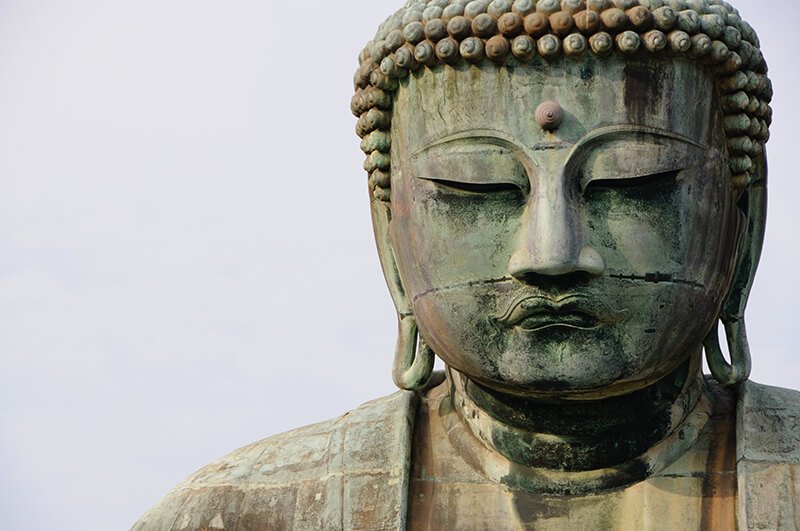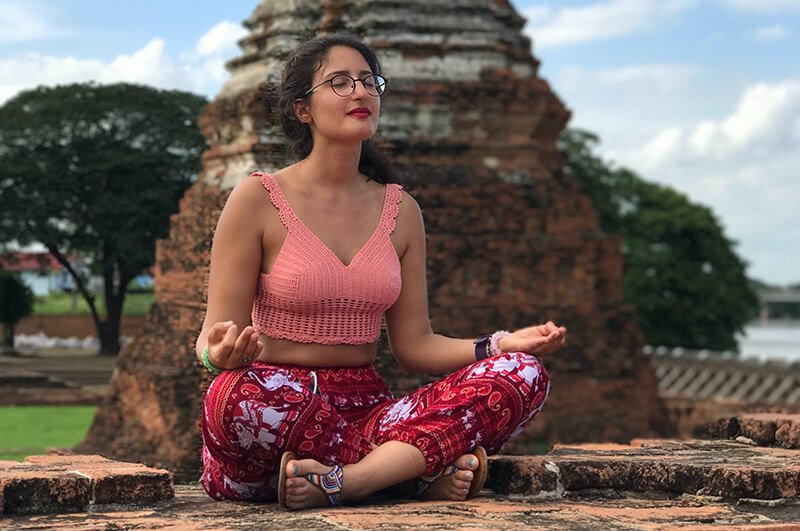 All meditation is created equal, right? You sit, with your eyes closed, and concentrate on deep breathing. Not necessarily. Some types of meditation can help calm your mind, while others focus on improving mental clarity, while others help improve deep breathing and wellness. Regardless of your ultimate goal with meditation, it will help improve overall well-being and have a calming effect on you. It’s the place where you can sit for just 10 minutes, and gain more insight into your mind and how it works. But what types of meditation are best for you, and which ones will deliver the goals/outcomes you want to see? Consider a few of these different types of meditation if you’re new to meditation and want to improve your mind, body, and spirit. Types of meditation When it comes to what kind of meditation to start with, always consider your needs, goals, and personal preferences. It also doesn’t hurt to give all of the following types of meditation practices a try. Instead of letting someone else tell you what kind of meditation to practice, see for yourself. The type of meditation practice you choose may also depend on your learning style. If you want to learn with a teacher or at a meditation retreat, certain forms of meditation will be better suited for you than others. If you’re interested in learning meditation on your own at home, start with a simple practice that allows you to use a guided meditation app. Open Monitoring This form of meditation focuses on keeping your attention on an object, without judgment surrounding it. You’ll focus on clearing preconceived notions, ideas, perceptions, and attachments to that object. Therefore, you don’t focus on the ways you believe it smells, looks, and feels; instead, you focus on the object, with a clear frame of mind and no conceptual bias before seeing it. The sole purpose is for non-reactive monitoring. This helps you learn how to be less judgmental outside yourself as well. At work, meeting new people, in new friendship groups, or even when you’re going to a local event you’re invited to, you’ll learn to arrive at these places, and just enjoy the environment and the people there. You don’t take any preconceived ideas or notions with you, and only let them form after the fact. Loving Kindness This form of meditation, loving-kindness meditation, is also known as Metta meditation; your focus is to cultivate loving feelings and kindness towards the things, people, and society around you. You don’t have enemies or external stresses. Instead, you focus on loving thoughts, thoughts of kindness, and making peace with everything and everyone around you. Practitioners of this type of meditation are open to external loving and kindness and accept it from others. Towards your loved ones, strangers, or even your boss/coworkers. You want to build a better world around you and focus on loving, kindness, and cultivating an environment of peace that surrounds you. Focuses on reducing anger, frustration, stress, resentment, and interpersonal conflicts, are top priorities when practicing this type of meditation. Mindfulness Mindfulness meditation is another one of the primary types of meditation that will help improve yourself from within. This form of meditation helps you to remain aware of the here and now, rather than focusing on what’s to come, or what has already happened. You’re focusing on remaining mindful of the thing you are doing, or the location you are at right now. You are not thinking about what will come next, where you have to be after work, or what time you have to pick up the kids. Your primary focus is on what you are doing, regardless of the level of importance, and learning to let go of things that are not right in front of you. It’s also a great type of meditation for beginners. You can do this almost anywhere. If you are stuck at the doctor’s office, don’t think of it as being stuck. Instead, focus on clearing your mind. Focus on your health and wellness. Think about improving yourself with the visit you’re going to have with the doctor. If you’re at a long line at the grocery store, you’ll focus on waiting and patience. You aren’t focused on the drive home, or unloading the groceries. Just focus on being present, and being where you are, when you are there. Vipassana (Insight) Vipassana is a type of meditation that is very similar to mindfulness. It’s a tradition from Tibetan Buddhism that translates to “insight” in English. The goal of insight meditation is to delve into the body and mind’s connection through contemplative practice. During this meditative practice, you practice being “the watcher.” The watcher is a non-judgemental open awareness of thoughts, sensations, and feelings that come and go through consciousness. Often, placing this awareness on the breath is the vehicle to reach this meditative state. With enough practice, it’s possible to get a glimpse of “the watcher.” You can begin to see your open-awareness as just another experience in consciousness. Body Scan This is one of the best types of meditation for scanning oneself, your body, and encourages practitioners to find areas of tension from within. Body scan meditation is also often referred to as progression meditation. Its primary goal is to help you alleviate tension, improve the muscular system, and focus on relaxation sessions. You’ll typically start at one end of your body and work your way through the body. Throughout the practice, find areas of tension, and focus on targeting relaxation and relaxing thoughts to those areas. This form of meditation can help improve chronic pain, help alleviate tension and stress, and improve muscular and skeletal system pain over time. It’s also a more accessible practice to learn for beginners as it engages your attention more than other types of meditation. Kundalini Yoga This form of physical activity or meditation, focuses on the mantras alongside deep breathing techniques. You concentrate on deep breathing, to help “eliminate toxins.” This is what is claimed, but we prefer the more scientific benefits around Kundalini, such as removing harmful thoughts from within. You’ll breathe slowly and deeply when you’re engaged in this physical meditation. You’re here to focus on breathing in and breathing out, and you’re trying to eliminate the clutter and any other thoughts that come into the mind while you’re partaking in this form of yoga and meditation. This type of meditation helps reduce levels of anxiety, helps with relaxation, and improves emotional flexibility to block out the external negativities around you. Plus, you’re getting in some physical activity as well, so it’s beneficial for the mind, body, and overall well-being. Transcendental With this type of meditation, you’re focused on the spiritual aspects of improving yourself. You’ll remain seated and focus on deep breathing techniques when performing transcendental meditation. Focus is on a specific mantra or a focused-word intended to help improve oneself and positive perceptions about yourself.
You’re focused on transcending and rising above your current state when engaging in this meditation. You want to take yourself to a higher level, and improve your self-value and worth with the positive mantra you’re repeating. The more you say it, the more you will believe it, and transcend into a deeper, better state over time. With Transcendental Meditation, you are given a mantra from a licensed teacher. The mantra acts as a vehicle to help you get to a meditative state. One of the downsides of this type of meditation is that it costs a lot of money to learn. Your turn These aren’t the only types of meditation to help improve your overall well-being, mind, body, and spirit. They are just some of the most popular types of meditation that practitioners engage in. Regardless of your level, what you want to improve, or where you are in life, these are some of the best meditative practices, to help you improve your mind, way of thinking, and way of perceiving the world around you, while improving the inner thoughts you have about yourself along the way. If you’re new to meditation and don’t know where to start, try Declutter The Mind. It offers a new guided meditation practice every day and offers a 30-day meditation course for beginners, which will introduce you to mindfulness meditation. Is there a meditation type you prefer or like? Let us know in the comments below. This article originally appeared at Declutter The Mind
0 Comments
Leave a Reply. |
Written, Compiled & Edited byThe Bergen Review Media Team Archives
April 2024
Categories
All
|
|
Bergen Review Media is a
WebClientReach, llc Company |
50 East Ridgewood Ave. #215
Ridgewood, NJ 07050 Phone: (201) 948-5500 |
The Bergen Review is Bergen county's concierge for the best businesses, restaurants & venues in New Jersey. Our agency has a combined total of over 15 years experience in online media and marketing. Our team of experts scour every nook and cranny of New Jerseys best businesses, restaurants & venues to present to our clients the full scoop of where best deals & experiences are. Even after researching & looking at reviews, finding the REAL scoop on what Businesses, restaurants or venues best fit your interest can be a challenge. Bergen Review Media has a team that researches & visits various establishments. Making sure the consumer gets the best experience.
|
Website by Bergen Review Media





 RSS Feed
RSS Feed






